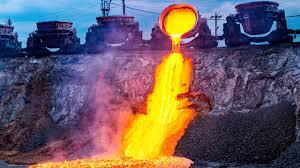The steel slag equipment market is witnessing growing investment opportunities, particularly across emerging steel-producing regions where infrastructure expansion, environmental regulations, and technological adoption are reshaping demand patterns. As the global steel industry continues its shift toward sustainable and localized production, regions such as Southeast Asia, the Middle East, Latin America, and parts of Africa are positioning themselves as key growth frontiers for slag equipment manufacturers and solution providers.
Southeast Asia stands out as a hotspot for steel production expansion, with countries like Vietnam, Indonesia, and the Philippines ramping up capacity to meet domestic construction and export requirements. These nations are not only investing in new steel mills but are also adopting integrated waste management and environmental sustainability frameworks. As a result, the need for modern steel slag processing equipment is on the rise. Equipment suppliers targeting this region are finding significant opportunities in both new plant setups and retrofitting of existing facilities with efficient slag crushers, granulators, separators, and cooling systems.
In parallel, the Middle East is undergoing a strategic transformation in its industrial base. Nations such as Saudi Arabia and the United Arab Emirates are heavily investing in non-oil sectors including construction, transport infrastructure, and manufacturing. As new steel plants are established under national industrial development programs, slag processing is becoming a priority, especially to align with circular economy and environmental protection mandates. Investment opportunities exist for firms offering turnkey slag processing systems, waterless granulation units, and energy-efficient equipment compatible with arid climates.
Africa, particularly Sub-Saharan countries like Nigeria, Kenya, and South Africa, presents another layer of opportunity. Although steel production levels are lower compared to Asia, the region is actively building steel capacity to reduce import dependency and promote industrialization. Slag equipment manufacturers who can offer low-cost, modular, and easy-to-maintain systems are in demand, especially from small to mid-scale producers. Moreover, international funding support for green industrial initiatives in Africa enhances the investment climate for sustainable slag processing technologies.
In Latin America, Brazil and Mexico are the dominant steel producers. Both countries have a mature steel sector, but modernization efforts and increased environmental compliance are pushing the demand for upgraded slag equipment. With a growing focus on decarbonization and reuse of industrial by-products in construction, investment opportunities lie in high-recovery magnetic separators, dust-free handling systems, and digital process control units for slag optimization. The broader push toward circular manufacturing practices across the region also supports a longer-term demand trajectory for advanced slag treatment technologies.
These emerging markets not only offer volume potential but also favorable policy environments. Many governments are promoting steel sector expansion through incentives such as tax breaks, land allocation, and technology grants. Additionally, environmental regulations are being progressively tightened to control waste generation and promote recycling. For steel producers in these regions, compliance is now linked to their ability to process slag effectively, creating an investment imperative in efficient and compliant equipment.
Another factor enhancing investment prospects is the localization trend. Many developing nations are encouraging local sourcing and manufacturing to build domestic capacity. International equipment providers can capitalize on this by forming joint ventures or licensing partnerships with local firms. Such collaborations enable faster market entry, cost competitiveness, and access to public sector tenders, especially in regions with strict local content requirements.
The steel slag equipment market is also benefiting from regional infrastructure initiatives. For example, Southeast Asia’s ASEAN Smart Cities program, the Middle East’s NEOM project, Africa’s AfCFTA-related industrial corridors, and Latin America’s urban revitalization efforts are all driving massive demand for steel and sustainable construction materials. Processed slag, when used as a cement substitute or construction filler, supports such initiatives. Hence, investment in slag equipment becomes indirectly aligned with broader regional infrastructure goals.
However, success in these emerging markets requires overcoming a few challenges. Infrastructure gaps, financing hurdles, and technical skill shortages can delay equipment deployment. Moreover, imported technologies may face compatibility issues due to variations in slag composition, operating conditions, or energy availability. Manufacturers must therefore customize offerings and ensure comprehensive technical support and training to ensure reliable performance and adoption.
Digital integration is another dimension of opportunity in emerging markets. Many regional steelmakers are making their first foray into Industry 4.0, and slag equipment providers can differentiate by offering systems embedded with sensors, monitoring dashboards, and automated diagnostics. These features not only enhance operational efficiency but also appeal to investors and regulators focused on traceability and sustainability metrics.
Financing models also influence investment outcomes. In capital-constrained environments, suppliers who offer flexible payment plans, equipment leasing, or performance-based contracts may achieve greater traction. International development banks and climate funds that support green industrialization may co-finance equipment procurement, especially if environmental benefits such as reduced landfill use or lower carbon emissions can be demonstrated.
From a strategic standpoint, early movers in these emerging regions will gain a first-mover advantage and benefit from long-term client relationships. Establishing local service centers, hiring regional sales engineers, and participating in local steel associations and sustainability forums can help build trust and brand presence. The ability to offer end-to-end support—from design consultation and installation to maintenance and performance upgrades—will further strengthen positioning in competitive bids.
To sum up, the steel slag equipment market offers immense investment potential across emerging steel-producing regions. As industrial expansion, environmental regulation, and construction demand converge, steelmakers are actively seeking reliable partners to modernize their slag handling capabilities. For equipment manufacturers, the key lies in local responsiveness, technological adaptability, and alignment with regional development goals. By proactively addressing these elements, investors and providers can tap into a growing and strategically critical segment of the global steel value chain.



